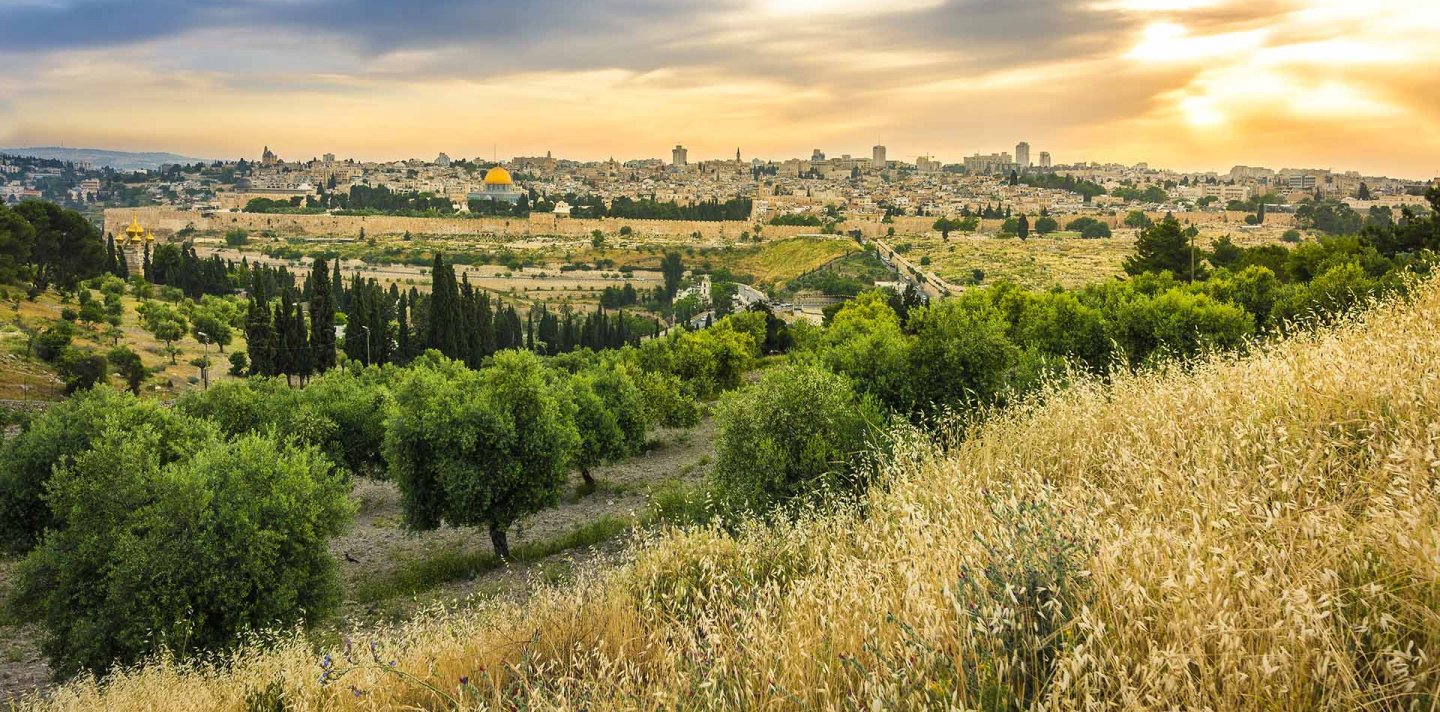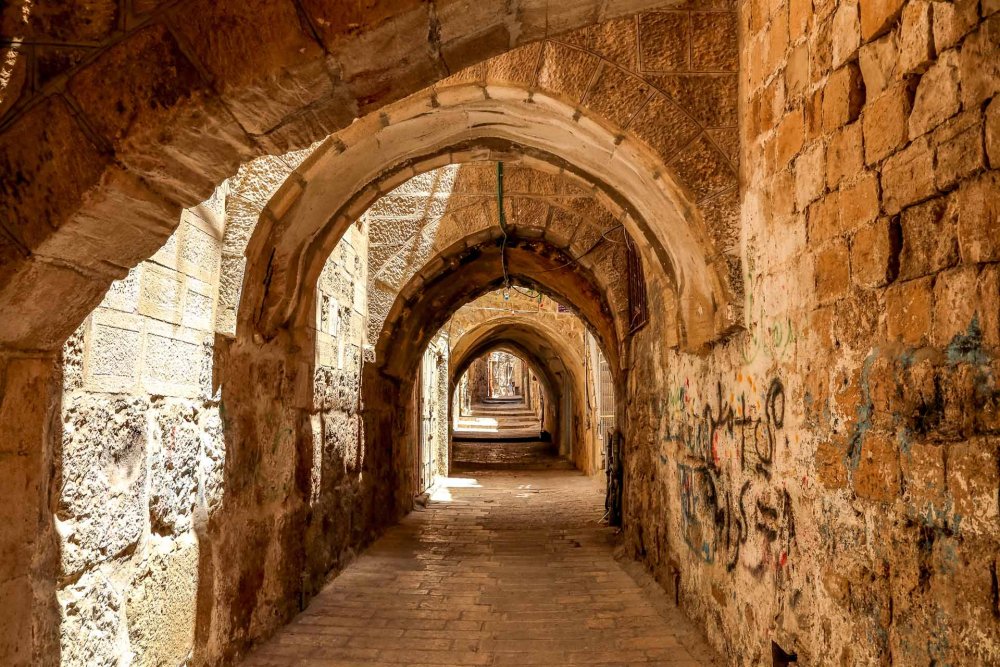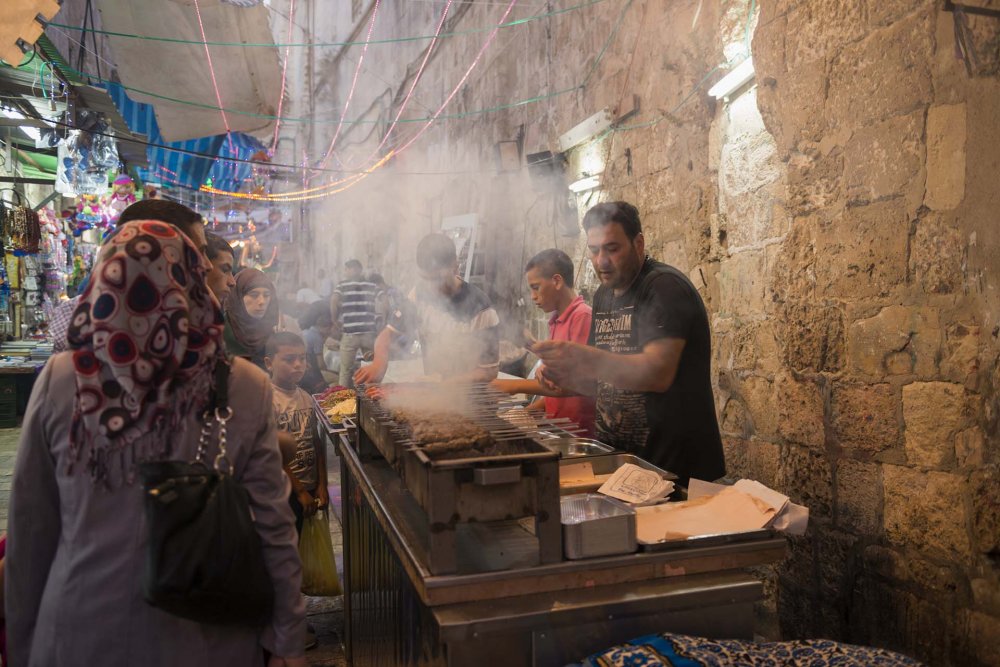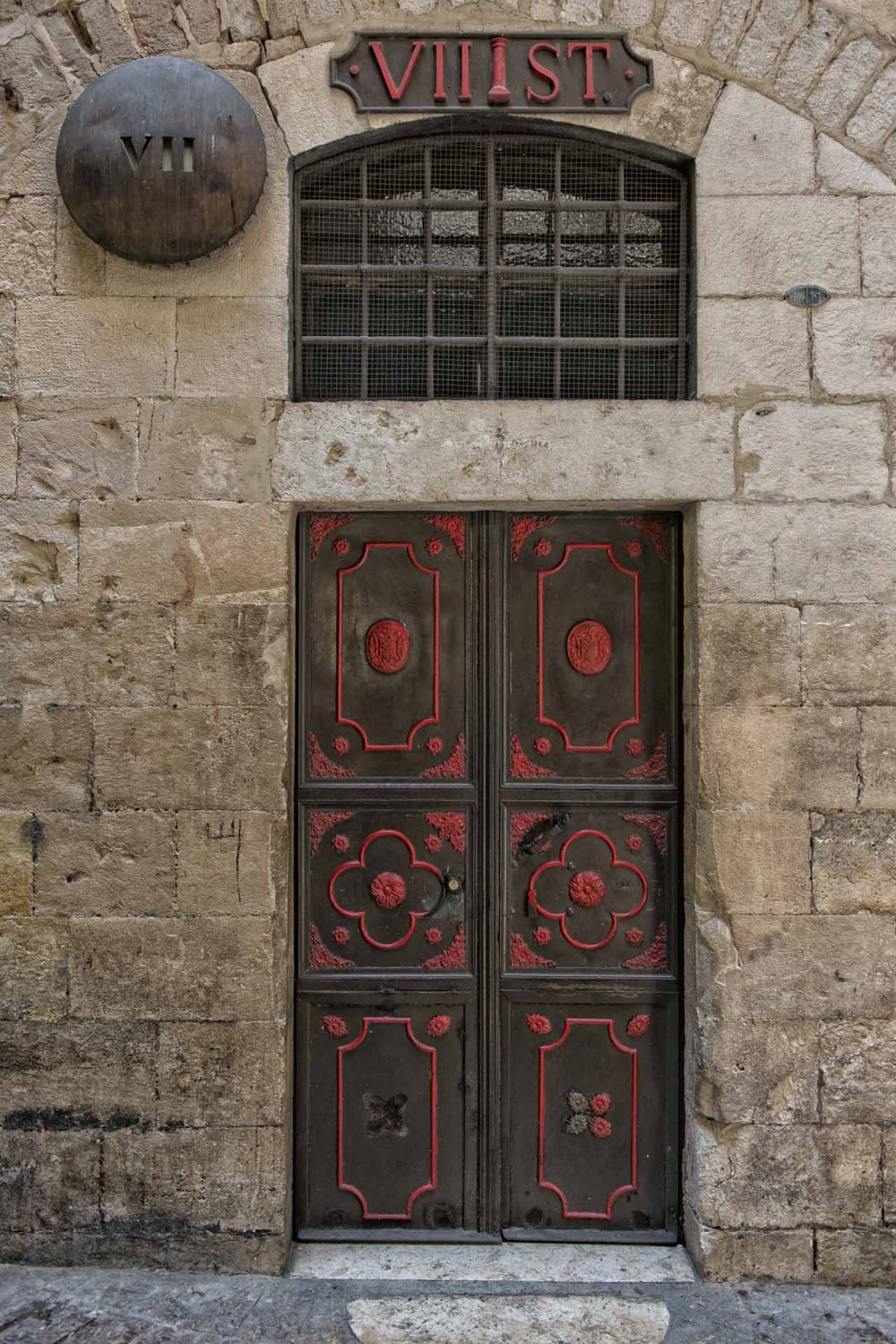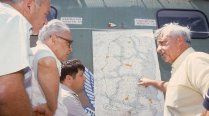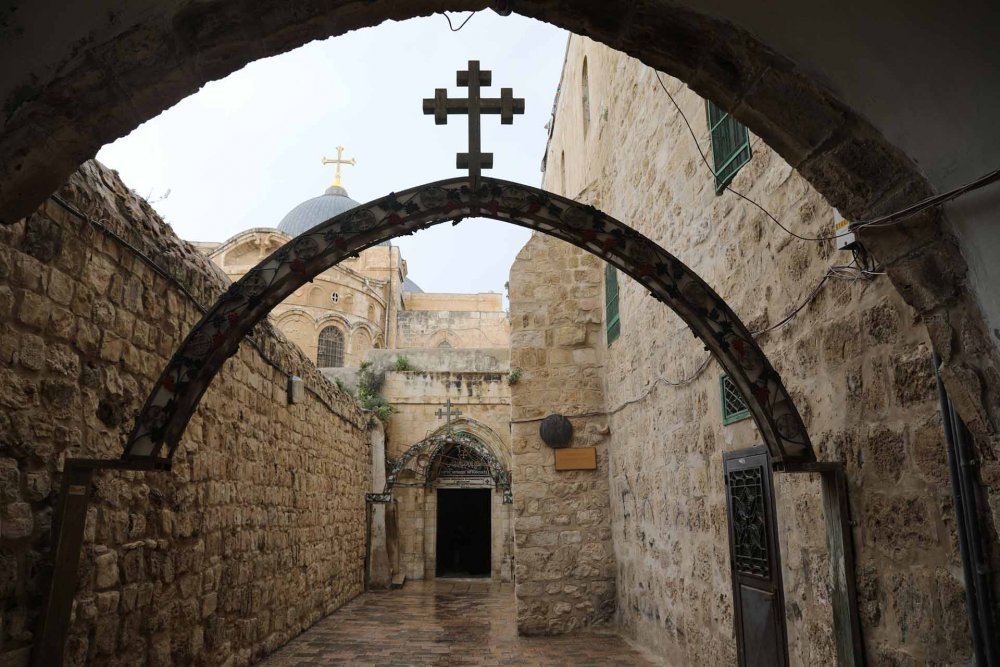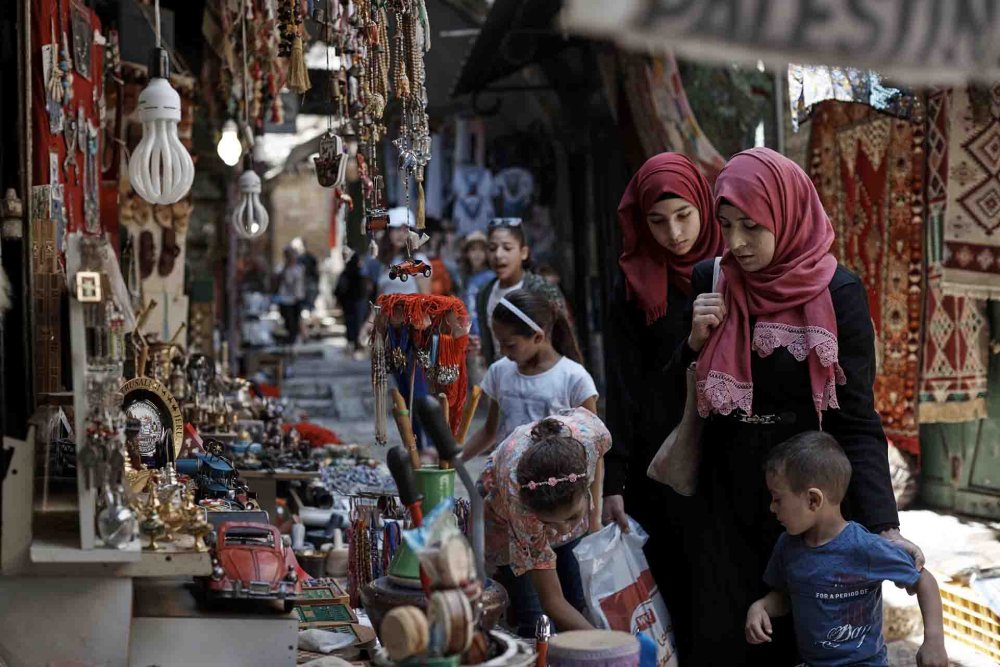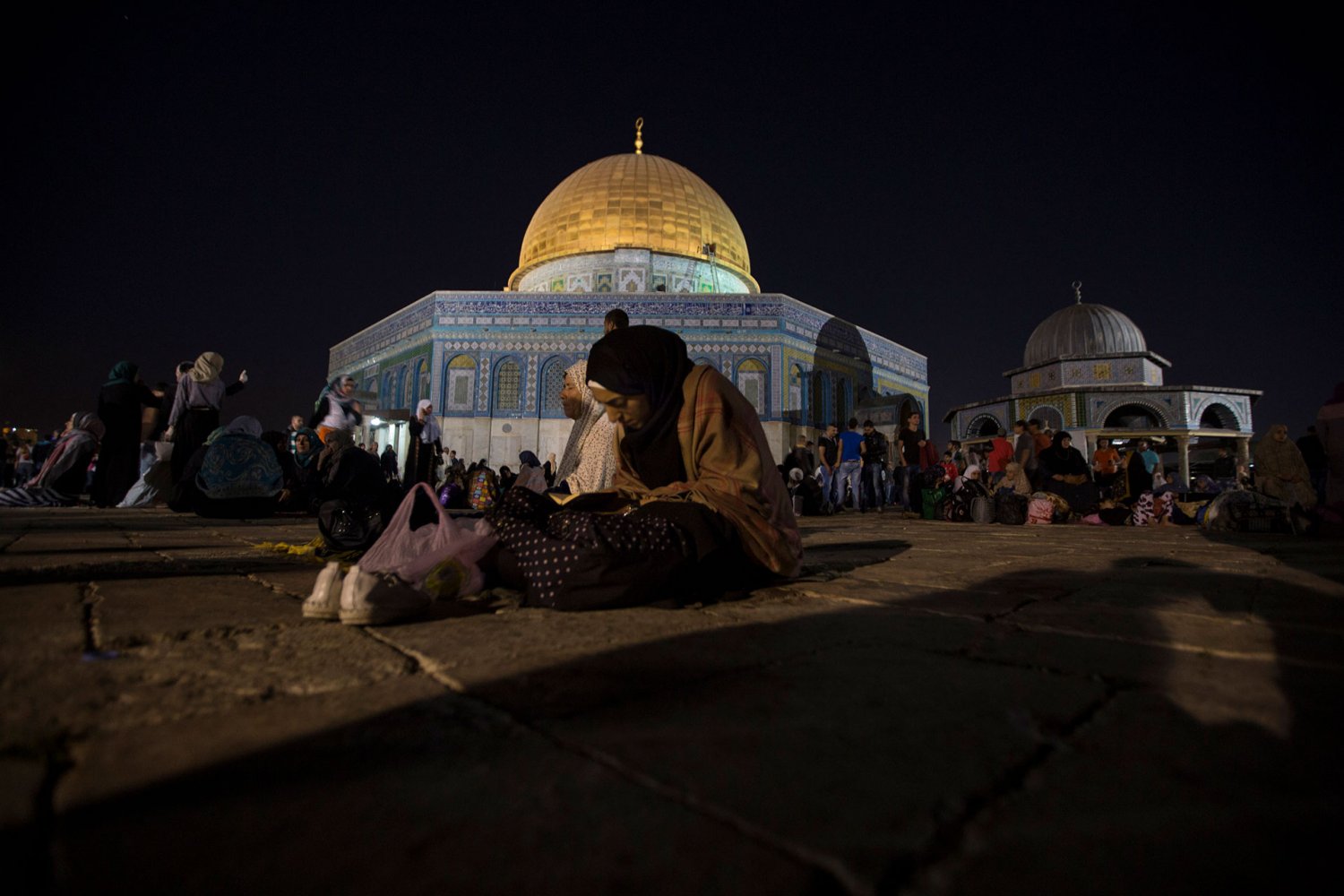My Jerusalem: Essays, Reminiscences, and Poems, edited by Salma Khadra Jayyusi and Jafar Ishaq Ansari (Northampton, MA: Olive Branch Press, 2005)
This collection of 44 essays and poems brings to life that most enigmatic of cities, Jerusalem, in all its complexity. The editors appear to be driven by a sense of urgency and a desire to convey to readers that, in addition to being a holy city—a fact that is imparted with every mention of the city in Arabic, al-Quds translating as “the Holy”—Jerusalem also has a long indigenous history and a community that calls it their hometown.
In the foreword, coeditor Zafar Ishaq Ansari tells the reader bluntly: “Today Jerusalem, this citadel of peace and devotion to God, is on fire, quite literally.”1 He is alarmed by the leadership of Israel, which has since 1948 been driven by the goal of Judaizing Jerusalem; he notes its “track record of carnage and crimes against humanity.” If he thought Israel’s leadership appalling in 2005, when the book was published, we can imagine how apocalyptic he would find the current conditions, with Jerusalem now off-limits to most Palestinians and proud Jewish promoters of ethnic cleansing holding Israeli prominent government positions.
For coeditor Salma Khadra Jayyusi, an understanding of the city’s true import must encompass more than its importance to three monotheistic religions.
The issue of Jerusalem is real and many-sided. Yet, when I think of Jerusalem, I think not only of the wider metropolitan city of modern times, outside the walls where I have lived, studied, and loved; I think, first and foremost, of the Old City, the essence of Jerusalem’s being and history: of a walled city, elegantly fortified with stately, well-balanced ramparts, opening on to the world through its famous seven gates. Yet these walls have never stood in defiance of the city’s holiness and religious centrality. . . .
When I was growing up, it was an aesthetic experience, constantly renewed, to come upon the Old City from any of Jerusalem’s metropolitan entrances, east and west, to be struck time and again by the peaceful walled citadel, with the Dome of the Rock perched majestically at the center of its heart.2
Jayyusi was a preeminent scholar and anthologist of Arabic literature whose collections have allowed English readers to get a sense of the rich body of literature produced by Arab novelists, short story writers, poets, and dramatists. This anthology is more personal, however, a fact conveyed by its very title and by the volume’s devotion to personal testimonials in the third and final section.
Whereas the shorter first and second sections discuss Jerusalem in terms of its past and 20th-century history, religious significance, and political and international roles, in the third (and largest) section, Jerusalem comes to life as a hometown.
In the first section, “The Contemporary Scene,” eight essays describe Jerusalem as it is today by reviewing the 20th-century events, forces, and policies that shaped it. “Jerusalem as the Key Issue,” by Bayan Nuwaihed al-Hut, states its purpose in the third paragraph: “to survey the developments in this ancient and glorious city, and to identify what has been left of the modern Jerusalem that we knew before its first catastrophe in 1948.”3 The essay describes Zionist (and later Israeli) attempts to Judaize Jerusalem, during the Colonial British Mandate, and continuing at an accelerated rate with the signing of the Oslo Accords. The accords, she observes, made little more than a casual reference to Jerusalem and deferred discussion on it to a later date, bundling it with other final status issues. In the meantime, Israel passed 10 laws that furthered the process of Judaizing Jerusalem and reducing the number of Arab residents of the city. She concludes that “Jerusalem . . . is likely to remain for at least some time the major issue; without addressing it, progress will hardly be possible.”4
Professor Adnan Al-Sayyid Hussein focuses on negotiations and argues that the parties to the conflict never conclusively addressed the status of Jerusalem in all negotiations since the first Camp David talks in 1978.
“The Jerusalem Question in International Law” explores the status of Jerusalem since the beginning of the British Mandate in 1922. For the status of Jerusalem during the Colonial British Mandate and after the 1948 and 1967 wars, author Eugene Cotran draws on the work of Henry Cattan, “the best known writer and authority on the Palestine question.”5 Cotran expresses misgivings about the Oslo Accords but identifies a few components that he finds positive for Palestinians; he posits that a way forward requires a mediator (he suggests Norway) and that the status of Jerusalem is an international issue and thus cannot be left to the two parties to decide. He lists various proposals for the status of Jerusalem and discusses their pros and cons and then concludes that the city should be undivided, that sovereignty will have to be shared, and that the Old City and religious sites need a “special regime.”6
The essay was written in the late 1990s, which explains perhaps why the author also calls for rescuing the Oslo process and implementing the two-state solution.
Another essay describes the role of Arab ambassadors to the United Nations during the 1967 War.
An essay on Jerusalem’s spiritual significance for Christians is provided by Reverend Michael Prior (to whom the volume is dedicated; he died a year before the book was published). Jayyusi’s explanation for its inclusion is noteworthy:
I have constantly wondered how the Christian world has failed to see how the Judaization of Jerusalem meant the cleansing not just of its Muslim but also of its Christian population—both indigenous to the city and both accustomed to coexistence, side by side, over centuries. The Christians are the one religious entity to have lived almost constantly in the city.7
Prior describes the evolution of the Holy See’s positions on Jerusalem and the challenge of Zionism and faults it for not offering a “more fundamental moral critique of Zionism” and showing “little inclination to examine the issues from the perspective of fundamental justice.”8
Other essays in the section explore Israeli policies that have effected an urban transformation of Jerusalem, a topic that is taken up again in the third section.
Six essays in the second section (“The Classical Scene”) describe the city’s relationship to the three monotheistic religions in the ancient and medieval periods. It is the shortest section among the three, but the one Jayyusi devotes more space to in the Introduction “because of the general confusion about Jerusalem’s multiple identity and the disproportionate knowledge of basic facts about its history.”9
Fittingly, the section begins with an essay on the scholarship around Omar’s Assurance of Safety, the guarantees of Caliph Omar Ibn al-Khattab to the people of Jerusalem upon his arrival to the city in 637 as its new ruler. Those assurances ushered in centuries of Muslim rule (interrupted briefly by the bloody Crusades) during which various religious denominations lived side by side without sectarian violence.
Other essays explore shared religious and political concepts in the ancient Middle East; archeological evidence (or lack thereof) to support Israel’s claims to the Temple Mount (al-Haram al-Sharif); and the Old City’s monuments.
The third section, by far the longest in the book, is fittingly titled “Voices of Jerusalem” and consists of 30 testimonies and poems that explain why Jerusalem is a personal subject. As conveyed by the title of the anthology, for hundreds of thousands of Palestinians, Jerusalem is a hometown, not just a symbol. Poet Mureed Barghouthy said it best:
[T]he world does not care for our Jerusalem, the Jerusalem of the people. The Jerusalem of houses and cobbled streets and spice markets, the Jerusalem of the Arab college, the Rashidiyyah school, and the ‘Umariyyah school. The Jerusalem of the porters and the tourist guides who know just enough of every language to guarantee them three reasonable meals a day. The oil market and the sellers of the antiques and mother-of-pearl and of sesame cakes. . . . Our neighbor the nun, and her neighbor the muezzin who was always in a hurry. The palm frond in all the streets on Palm Sunday, the Jerusalem of houseplants, cobbled alleys, and narrow covered lanes. The Jerusalem of clotheslines. This is the city of our senses, our bodies, and our childhood. The Jerusalem that we walk in without much noticing it’s “sacredness,” because we are in it, because it is us. . . . This is the ordinary Jerusalem. The city of our little moments that we forget quickly because we will not need to remember, and because they are ordinary like water is water and lightning is lightning. And as it slips from our hands it is elevated to a symbol, up there in the sky.10
In this section, the lived experience of the city is conveyed—its sights and smells. Many of the contributors in this section are Jerusalemites who live far from the city and not by choice; others pass through, like the Greek novelist Nikos Kazantzakis, creator of the larger-than-life character Zorba the Greek, who sits in contemplation in the Mosque of Omar. “For the first time on this earth,” he writes, “it seemed to me that the chaos of the heart subordinated itself with such grace, and without renouncing its riches, to the austere outline of the mind.”11
Na’ila ’l-Wa‘ri left Jerusalem in 1967, returning after securing a foreign passport, and then only as a tourist. “I am now convinced that the road back is very long and the distance is very far for all of us. Yet, I must strive to return to Jerusalem, as a native and not as a tourist, because I am its legitimate daughter, with roots and a long and authentic history. . . . I had come filled with hope and expectations, but have left with a thorn in my throat and a pain in my heart. Writing this story has only made my pain greater.”12
Hala Sakakini, the daughter of educator Khalil Sakakini, was 24 years old when she was forced to leave her home in Qatamon in 1948. She recalls the attractive stone houses of her neighbors, so different from what she saw when she revisited her old neighborhood after the June 1967 War. The houses she remembered so fondly, now dilapidated, and the new construction so inferior: “And what ugly, huge tenant houses have sprung up in what used to be open countryside to the south of Jerusalem. Those rolling hills once strewn with olive trees, where we used to picnic as children, have become congested areas. . . . Everything now looks so disorderly, so utilitarian, so impersonal, so shabby. By putting up these houses, Israel has failed to create new neighborhoods; it has only provided new immigrants with places to dwell in.”13
Another exile, Kamal Boullata, wrote from his home in southern France about growing up in Jerusalem among the religious icons and structures that would influence his artistic focus throughout his life. After years of exile, he realized that “the road to Jerusalem is in the heart, and that only after one is capable of renouncing what one loves most can one hope to recreate it.”14 He was able to return permanently to Jerusalem only in 2019, after his widow secured the right to bury him in the city that shaped him as an artist.
One of the more unusual testimonies (translated from German) is taken from the diary of one Leopold Weiss, a European Jew who moved to Jerusalem at the invitation of his uncle in 1922 to visit his uncle, never remotely imagining the profound upheaval this would create. When he arrived in Jerusalem, he seems to have harbored no prejudice against Arabs and no inclination toward Zionism. His journal entry for April 10, 1923, includes this comparison of growing Arab and Jewish Zionist nationalism.
Everything that is morbid in Zionist politics finds its expression, I believe, in this unhealthy truism; revealing itself in terms of “uncomfortable” or stifling conflict. The Arab resistance has a quite different style. Born of immediate need, it doesn’t aspire to, or attempt to, parallel Zionist strivings towards “cultural values”; at this moment—and perhaps for a long time to come—it is very young, and thus also honest; for actually nothing will be “realized” yet. It is a simple, defensive awakening of power in the face of obstacles to development, and because of that it’s never reactionary and always free in spirit, in profound contrast to the spirit of European nationalism. The nationalism of the East is revolutionary, because it’s fighting for undetermined things that lie in the future, rather than basing itself on symbols of the past.15
Less than a month later, he would write: “Here I am at the center of the world because in Arab life I hear the hum of the present as nowhere else.”16 In 1926, converted to Islam, taking the name Muhammad Asad and living the rest of his life in Muslim countries.
Jerusalem is the home of grandparents visited by grandchildren during the summer. Michel Moushabeck describes his visit to his maternal grandparents in the summer of 1966. His grandfather was an Old City mukhtar known to everyone in the area, which meant that he too was known to everyone he encountered. When Michel and his family prepared to leave Jerusalem on that last visit home, the whole neighborhood came to see them off in the morning. It was to be his last visit to Jerusalem and the last time he saw his grandparents.
The essays in the three sections of this volume complement one another by contributing to a depiction of Jerusalem that is told through its history, politics, and religious significance, but especially through its people.
Notes
Zafar Ishaq Ansari, “Foreword,” in My Jerusalem: Essays, Reminiscences, and Poems, edited by Salma Khadra Jayyusi and Zafar Ishaq Ansari (Northampton, MA: Olive Branch Press, 2005), xiii.
Salma Khadra Jayyusi, “Introduction,” in My Jerusalem, 8.
Bayan Nuwaihed al-Hut, “Jerusalem as the Key Issue,” in My Jerusalem, 21.
al-Hut, “Jerusalem as the Key Issue,” 32.
Eugene Cotran, “The Jerusalem Question in International Law,” in My Jerusalem, 58.
Cotran, “Jerusalem Question,” 69.
Jayyusi, “Introduction,” 3.
Michael Prior, “Holy Places, Unholy Domination: The Scramble for Jerusalem,” in My Jerusalem, 89, 90.
Jayussi, “Introduction,” 3.
Mureed Barghouthy, “Jerusalem Reminiscences,” in My Jerusalem, 283.
Nikos Kazantzakis, “The Mosque of Omar,” in My Jerusalem, 265.
Na’ila ’l-Wa‘ri, “I Lived in Jerusalem,” in My Jerusalem, 195.
Hala Sakakini, “Jerusalem and I: A Personal Record,” in My Jerusalem, 256.
Kamal Boullata, “A Jerusalemite Painter Remembers,” in My Jerusalem, 207.
Muhammad Asad (Leopold Weiss), “Jerusalem in 1923: The Impressions of a Young European,” in My Jerusalem, 224.
Asad, “Jerusalem in 1923,” 233.

